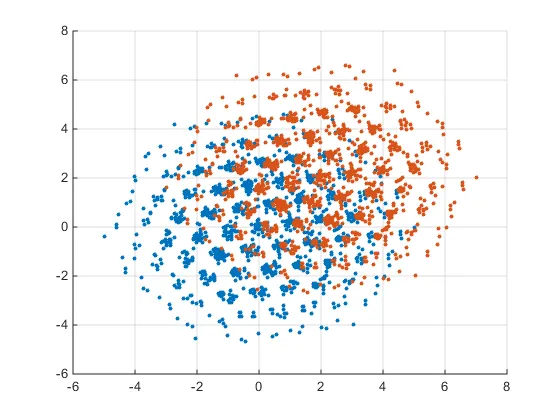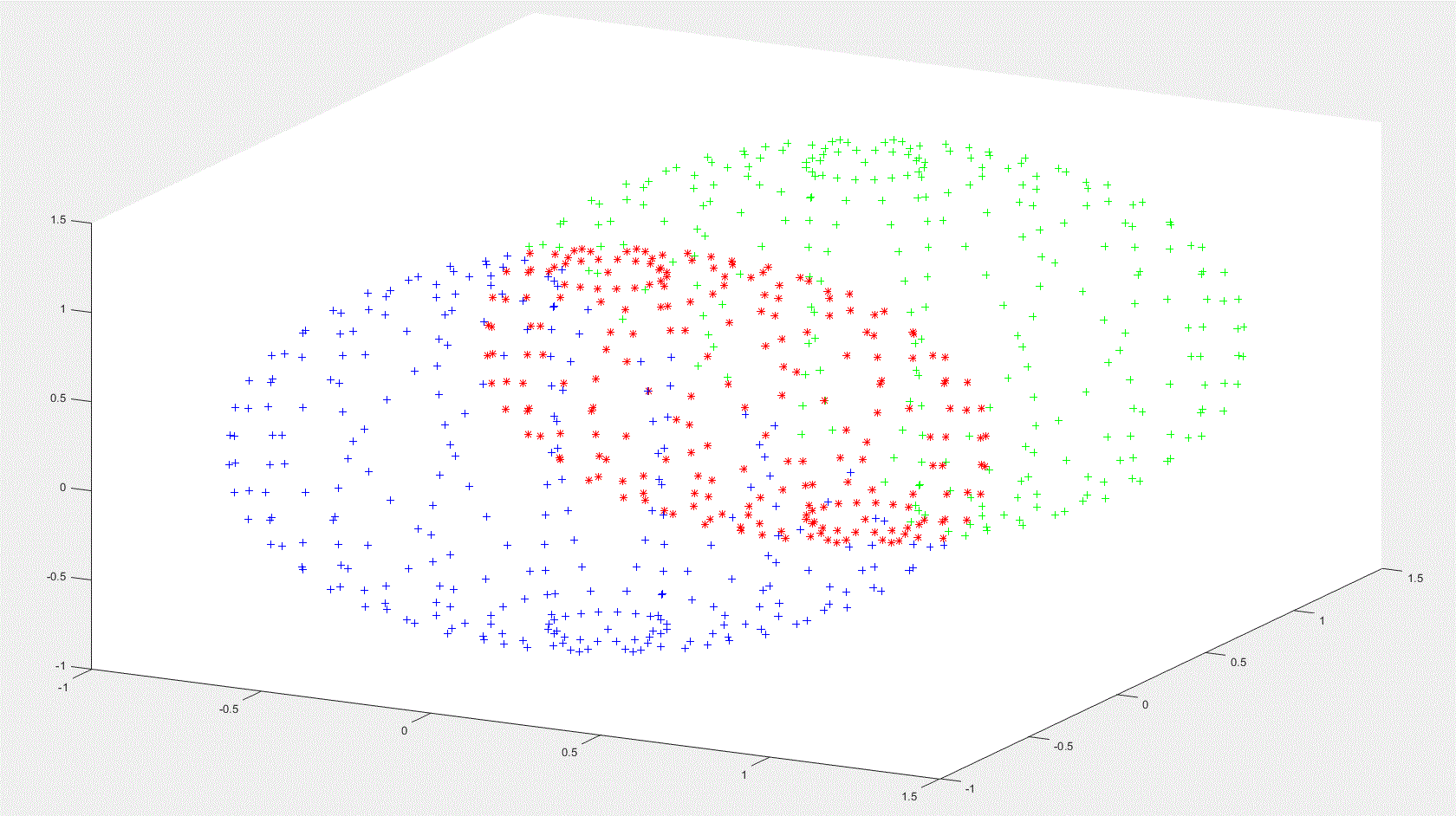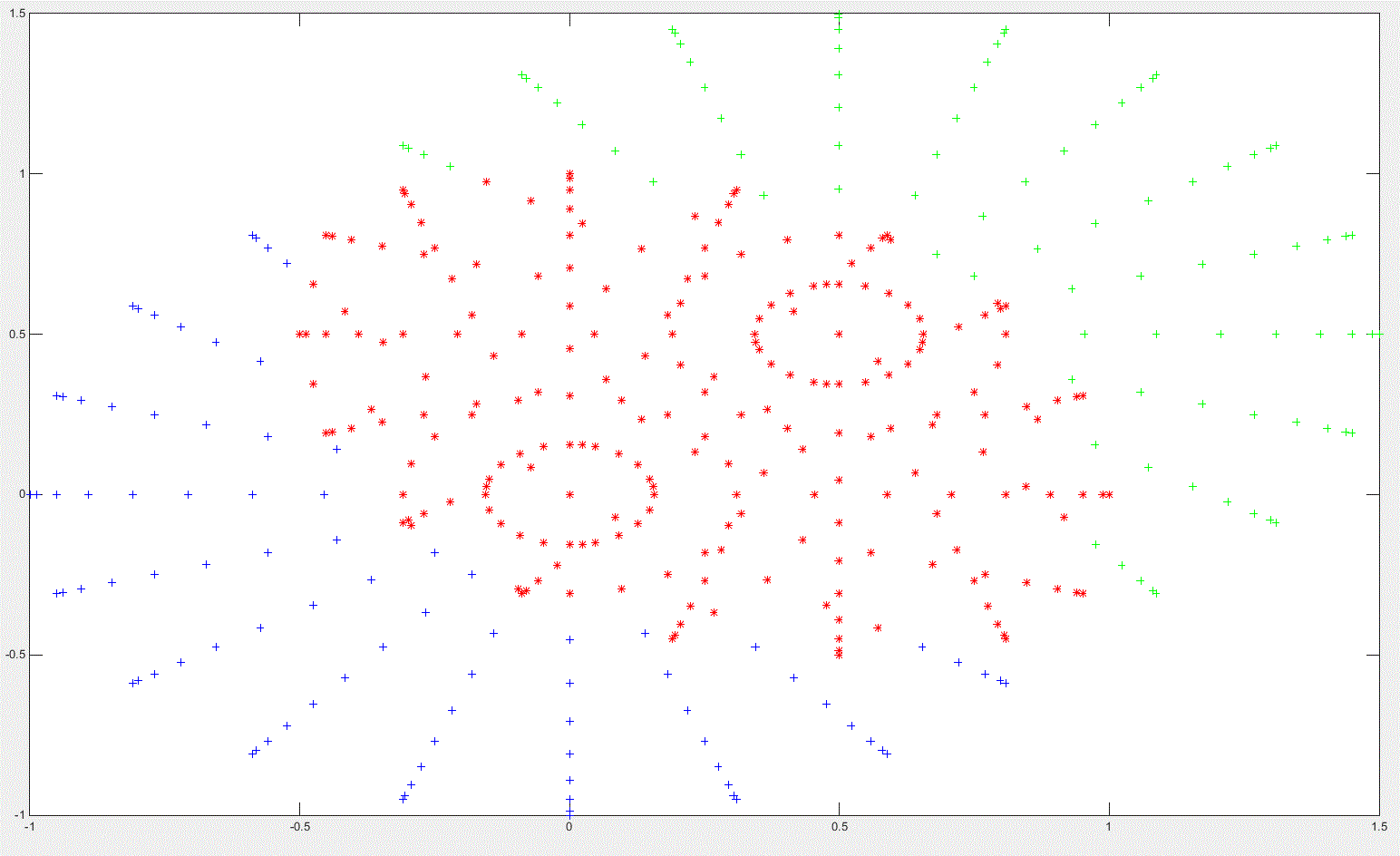1个回答
9
我在评论中提到可以使用convhull和inpolygon来解决这个问题,但是inpolygon似乎不适用于3D多边形。我们将使用delaunayTriangulation和pointLocation来得到结果。
完整代码:
[x,y,z] = sphere;
A=[x(:),y(:),z(:)];
B=[x(:)+0.5,y(:)+0.5,z(:)+0.5];
tess1=delaunayTriangulation(A); % delaunay Triangulation of points set A
tess2=delaunayTriangulation(B); % delaunay Triangulation of points set B
Tmp=[A;B];
% Point location searches for the triangles in the given delaunay
% triangulation that contain the points specified in Tmp, here Tmp is
% the reunion of sets A and B and we check for both triangulations
ids1=~isnan(pointLocation(tess1,Tmp));
ids2=~isnan(pointLocation(tess2,Tmp));
% ids1&ids2 is a logical array indicating which points
% in Tmp are in the intersection
IntersectPoints=Tmp(ids1&ids2,:);
plot3(A(:,1),A(:,2),A(:,3),'+b'); hold on
plot3(B(:,1),B(:,2),B(:,3),'+g');
plot3(IntersectPoints(:,1),IntersectPoints(:,2),IntersectPoints(:,3),'*r')
输出:
编辑 - 二维示例:
[x,y,z] = sphere;
A=[x(:),y(:)];
B=[x(:)+0.5,y(:)+0.5];
tess1=delaunayTriangulation(A); % delaunay Triangulation of points set A
tess2=delaunayTriangulation(B); % delaunay Triangulation of points set B
Tmp=[A;B];
% Point location searches for the triangles in the given delaunay
% triangulation that contain the points specified in Tmp, here Tmp is
% the reunion of sets A and B and we check for both triangulations
ids1=~isnan(pointLocation(tess1,Tmp));
ids2=~isnan(pointLocation(tess2,Tmp));
% ids1&ids2 is a logical array indicating which points
% in Tmp are in the intersection
IntersectPoints=Tmp(ids1&ids2,:);
plot(A(:,1),A(:,2),'+b'); hold on
plot(B(:,1),B(:,2),'+g');
plot(IntersectPoints(:,1),IntersectPoints(:,2),'*r');
输出:
编辑2:
如果您希望您的代码可以自动适应2D或3D数组,则只需要修改绘图调用。只需编写一个if语句来检查A和B中的列数即可。
- BillBokeey
13
我使用了一个函数,用于替换该方程中theta1和theta2的值,取值范围为0->360。[cos(theta1(t)) + cos(theta1(t) + theta2(t)), sin(theta1(t)) + sin(theta1(t) + theta2(t)), 0] - Trippy
1请在您的问题中发布实际代码,以显示在您的图表中的点。 - BillBokeey
1出色!仍然存在凸性假设问题,但正如Dennis所说,在你回答问题之前需要领域知识来重新指定问题。我认为这是OP可以期望的最好答案。 - Dan
1这条评论让我开心了 @Dan - BillBokeey
2漂亮。多么出色的努力!+1。 - rayryeng
显示剩余8条评论
网页内容由stack overflow 提供, 点击上面的可以查看英文原文,
原文链接
原文链接



convhull函数,然后使用inpolygon函数来检查交集中的点。 - BillBokeey